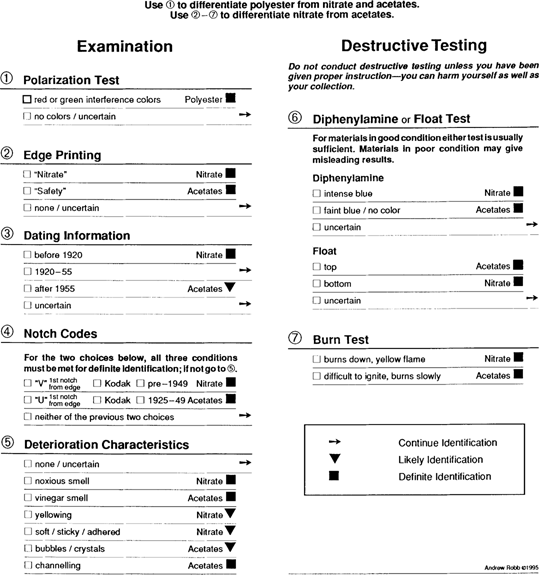
Topics in Photographic Preservation 1995, Volume 6, Article 14 (pp. 134-135)
The flow chart on the following page supplements “Guidelines for Care & Identification of Film–Base Photographic Materials,” Topics in Photographic Preservation, volume 5, 1993, by Monique Fischer and Andrew Robb. For best results, please refer to the background information and detailed instructions contained in that publication.
This flow chart is designed to introduce film–base identification to those with little or no experience in this important preservation activity. Definite identification is often difficult even for experienced examiners, particularly of film–base materials in excellent condition. A reference collection of known film–base samples in various deterioration levels can be an invaluable resource. Even if identification is uncertain, badly deteriorated film-base materials should be isolated from those in good condition.
The identification procedures listed in this chart are divided into two categories, Examination and Destructive Testing. It is important to consider carefully your reasons for conducting a destructive test.
Please refer to “The Guidelines for Care and Identification of Film–Base Photographic Materials,” Topics in Photographic Preservation, volume 5, for further information.
For each identification procedure mark the box that best describes your observations/results, and proceed according to the symbol following your selection. An arrow “→” means that identification is uncertain and the examiner should continue to the next step. A triangle “▾” means that identification is likely, but not certain, and further examination or testing should be considered. A square “▪” indicates that the film–base is firmly identified.
